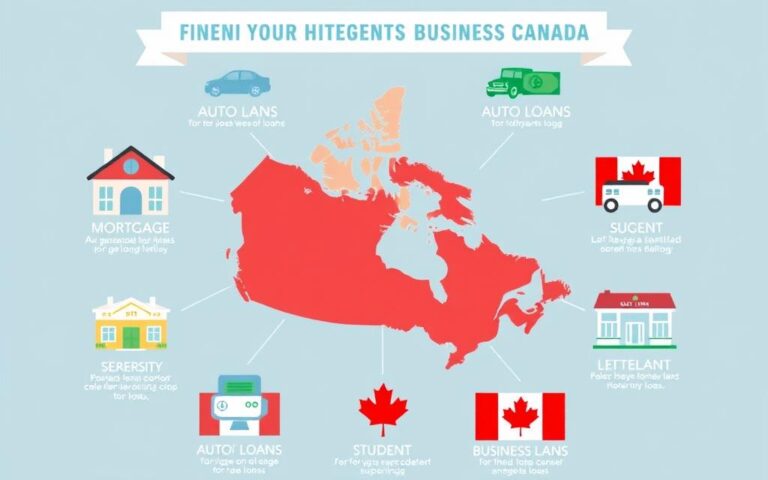adversiment
The Royal Bank of Canada (RBC) stands as one of Canada’s most trusted financial institutions, offering a wide range of services to help you achieve your financial goals. Whether you’re looking to open a bank account, apply for a credit card, secure a mortgage, or explore investment options, RBC provides tailored solutions designed to meet your needs. With a legacy of reliability and innovation, RBC makes it easier than ever to take the next step in your financial journey.
Applying for financial products with RBC is a straightforward process, supported by intuitive tools and expert guidance. From online applications to in-branch assistance, RBC ensures that you have access to the resources needed to make informed decisions. No matter your financial situation or goals, RBC offers options that are both flexible and accessible, empowering you to take control of your finances with confidence.
In this guide, we’ll break down the steps for applying with RBC, covering everything from choosing the right product to completing your application and understanding the benefits. By following these steps, you’ll gain the clarity and support needed to navigate the process and make choices that align with your financial aspirations.
Eligibility Criteria for RBC Loans
RBC loans have specific eligibility criteria for Canadian borrowers. These include age, residency, credit score, and income requirements. Understanding these guidelines can help streamline your loan application process.
Age and Residency Requirements
RBC loan applicants must be at least 18 years old. They must also be Canadian residents. This means having a valid Canadian address and being a citizen or permanent resident.
Credit Score Considerations
Your credit score is crucial in RBC’s loan approval process. Higher scores often lead to better terms and interest rates. Excellent credit scores (760+) may qualify for the best RBC loans and personal loans RBC offers.
Income Verification
- RBC requires proof of income, such as pay stubs, tax returns, or employment documents.
- Required income levels vary based on loan amount and type.
- Consistent, reliable income sources show your ability to make timely payments.
| Eligibility Criteria | Requirements |
|---|---|
| Age | Minimum 18 years old |
| Residency | Canadian citizen or permanent resident |
| Credit Score | Excellent (760+) for best rates |
| Income Verification | Pay stubs, tax returns, employment documents |
Meeting these criteria can boost your chances of getting suitable RBC loans or personal loans RBC. Consider your financial needs and eligibility before applying.
How to Apply for an RBC Loan
Applying for an RBC loan is easy and can be done online. RBC offers personal loans, home equity lines, auto loans, and business financing. Here’s how to apply for an RBC loan.
Online Application Process
Start by visiting the RBC website. Find the loan you want and click “Apply Now”. This takes you to an online form.
Fill in your personal and financial details. The form is easy to use and guides you through each step.
Required Documentation
Have your documents ready before you apply. This makes the process smoother. The required documents may vary by loan type.
Generally, you’ll need:
- Government-issued identification (e.g., driver’s license, passport)
- Proof of income (e.g., pay stubs, tax returns, financial statements)
- Information about the asset being financed (e.g., vehicle details, property details)
- Banking information (e.g., account numbers, routing numbers)
Having these documents ready can speed up your application. It also increases your chances of approval.
“Applying for an RBC loan is a seamless experience, thanks to the bank’s user-friendly online platform and clear documentation requirements.”
Interest Rates and Terms for RBC Loans
RBC offers various loan options with different interest rates and terms. Understanding these details is vital for Canadian borrowers. This guide will help you make an informed choice.
Fixed vs. Variable Interest Rates
RBC loans come with fixed or variable interest rates. Fixed rates stay the same throughout the loan, providing stable monthly payments. Variable rates can change based on market conditions, potentially affecting payment amounts.
Your choice depends on your financial goals and risk tolerance. Fixed rates suit those who prefer consistent budgeting. Variable rates might save money if interest rates drop.
Loan Terms Explained
| Loan Term | Description |
|---|---|
| Short-term | Loan repayment periods typically ranging from 1 to 5 years, often used for personal loans or auto financing. |
| Medium-term | Loan repayment periods typically ranging from 5 to 10 years, commonly used for home equity lines of credit (HELOCs) or business loans. |
| Long-term | Loan repayment periods typically ranging from 10 to 25 years, commonly associated with RBC mortgage loans. |
Your loan term choice depends on your financial needs and repayment ability. Short-term loans often have lower interest rates but higher monthly payments. Long-term loans typically have lower monthly payments but higher overall interest costs.
Understanding RBC’s interest rate structures and loan terms helps Canadian borrowers make smart financial decisions. Choose an option that fits your goals and personal situation.

Understanding RBC Loan Fees and Charges
RBC loans come with various fees and charges. These costs can significantly impact your loan’s affordability. Being informed is crucial before making a decision.
Application Fees
RBC charges an application fee for loan requests. This fee covers administrative costs for processing your application. The fee amount varies based on loan type and your financial situation.
Prepayment Penalties
Early loan repayment may result in prepayment penalties. These charges compensate the bank for lost interest. The penalty amount depends on factors like remaining loan term and interest rate.
Review your RBC loan terms carefully to understand specific fees. This helps you make informed decisions and budget accordingly.
| Loan Type | Application Fee | Prepayment Penalty |
|---|---|---|
| Personal Loan | $150 | 3 months’ interest |
| Home Equity Line of Credit (HELOC) | $300 | 2% of the outstanding balance |
| Auto Loan | $99 | 1% of the remaining balance |
| Business Loan | $500 | 6 months’ interest |
“Understanding the fees and charges associated with an RBC loan is crucial to ensuring you make a well-informed financial decision.”
Managing Your RBC Loan
Understanding your RBC loan payment options is crucial. Proper management helps avoid financial issues and ensures a smooth experience. Proactive handling of your loan is key to success.
Payment Options Available
RBC offers flexible payment methods to suit your needs. You can choose from several convenient options.
- Automatic bank account withdrawals
- Online or mobile app payments
- In-person payments at RBC branches
- Mailing checks or money orders to RBC
Tips for Keeping Up with Payments
To stay on top of your RBC loan, try these helpful tips:
- Set up automatic monthly payments to avoid missed or late payments.
- Mark due dates on your calendar and set reminders.
- Consider enrolling in RBC’s RBC loans or RBC debt consolidation loans payment plan.
- Contact RBC’s support team if you face financial difficulties.
Using these payment options and tips can help you manage your loan effectively. This approach will help maintain a positive credit history.
“Staying on top of your RBC loan payments is crucial for financial stability and building a strong credit profile.”




